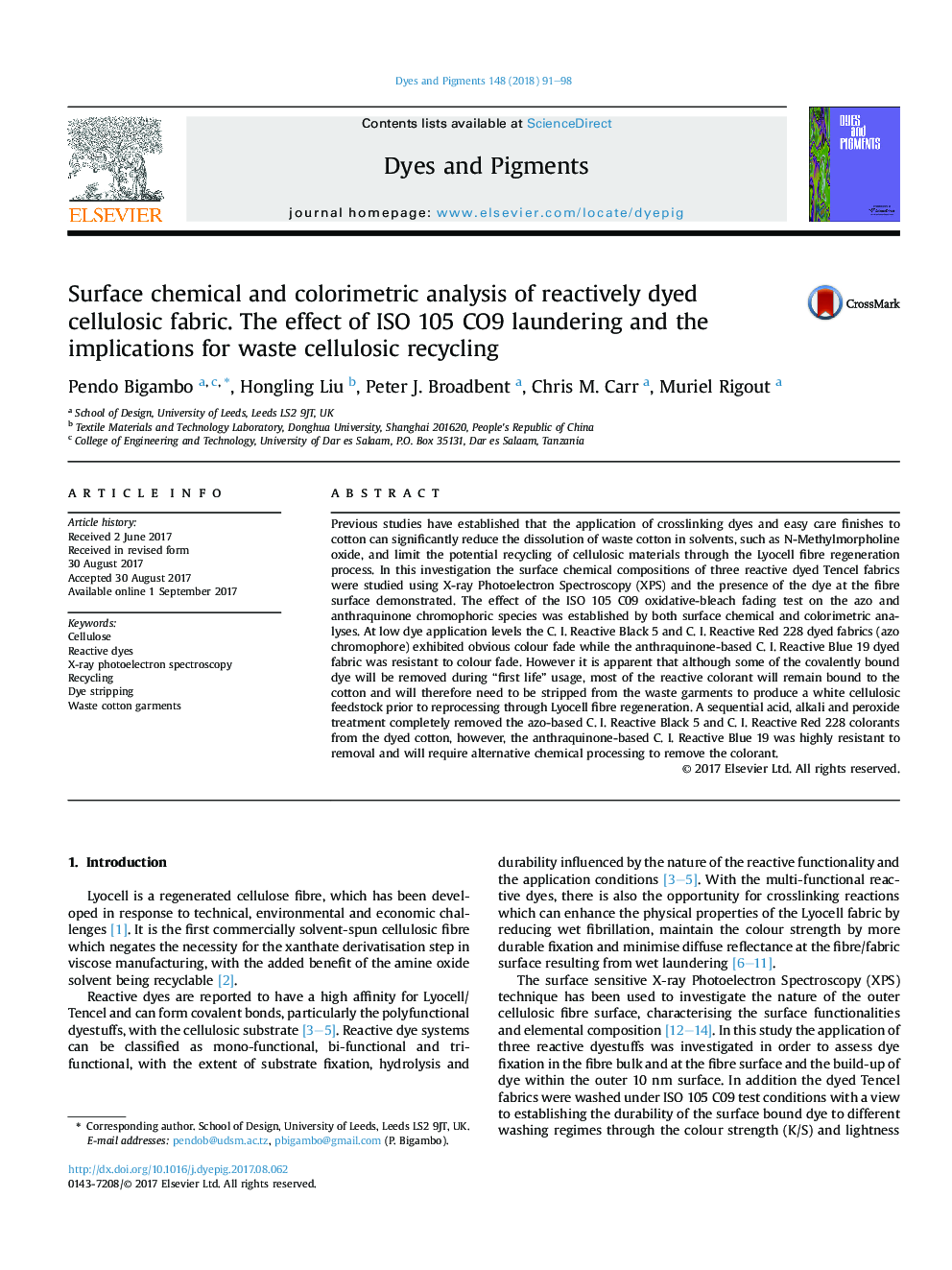| کد مقاله | کد نشریه | سال انتشار | مقاله انگلیسی | نسخه تمام متن |
|---|---|---|---|---|
| 4765707 | 1423887 | 2018 | 8 صفحه PDF | دانلود رایگان |
- Effect of oxidative bleaching on reactive dyed cellulosic surfaces and colour was evaluated.
- The anthraquinone dye chromophore was more stable to chemical degradation than the azo dye chromophore.
- Reactive dyes will typically be present on cellulosic fibres at the end of a garments “first lifetime” usage.
- Acid, alkali and peroxide treatments decolourised azo-based reactive dyes but anthraquinone-based dyes were more resistant.
- The impact of reactive dyes on the potential recycling of waste cellulosic feedstock and new fibre regeneration was explored.
Previous studies have established that the application of crosslinking dyes and easy care finishes to cotton can significantly reduce the dissolution of waste cotton in solvents, such as N-Methylmorpholine oxide, and limit the potential recycling of cellulosic materials through the Lyocell fibre regeneration process. In this investigation the surface chemical compositions of three reactive dyed Tencel fabrics were studied using X-ray Photoelectron Spectroscopy (XPS) and the presence of the dye at the fibre surface demonstrated. The effect of the ISO 105 C09 oxidative-bleach fading test on the azo and anthraquinone chromophoric species was established by both surface chemical and colorimetric analyses. At low dye application levels the C. I. Reactive Black 5 and C. I. Reactive Red 228 dyed fabrics (azo chromophore) exhibited obvious colour fade while the anthraquinone-based C. I. Reactive Blue 19 dyed fabric was resistant to colour fade. However it is apparent that although some of the covalently bound dye will be removed during “first life” usage, most of the reactive colorant will remain bound to the cotton and will therefore need to be stripped from the waste garments to produce a white cellulosic feedstock prior to reprocessing through Lyocell fibre regeneration. A sequential acid, alkali and peroxide treatment completely removed the azo-based C. I. Reactive Black 5 and C. I. Reactive Red 228 colorants from the dyed cotton, however, the anthraquinone-based C. I. Reactive Blue 19 was highly resistant to removal and will require alternative chemical processing to remove the colorant.
Journal: Dyes and Pigments - Volume 148, January 2018, Pages 91-98
